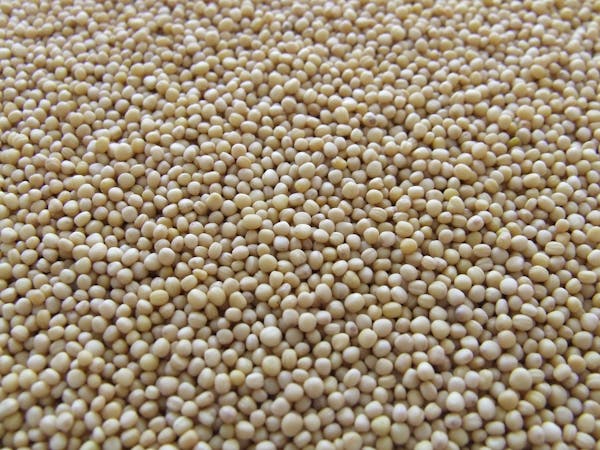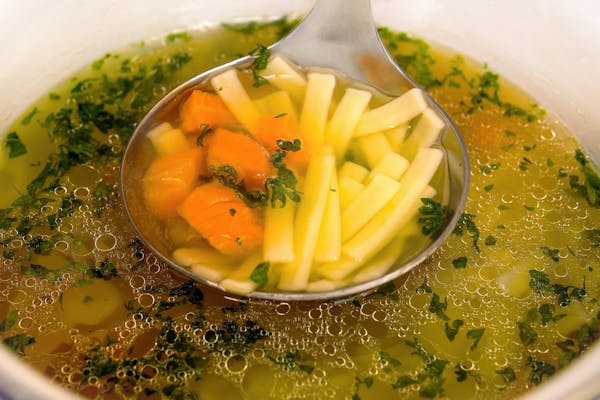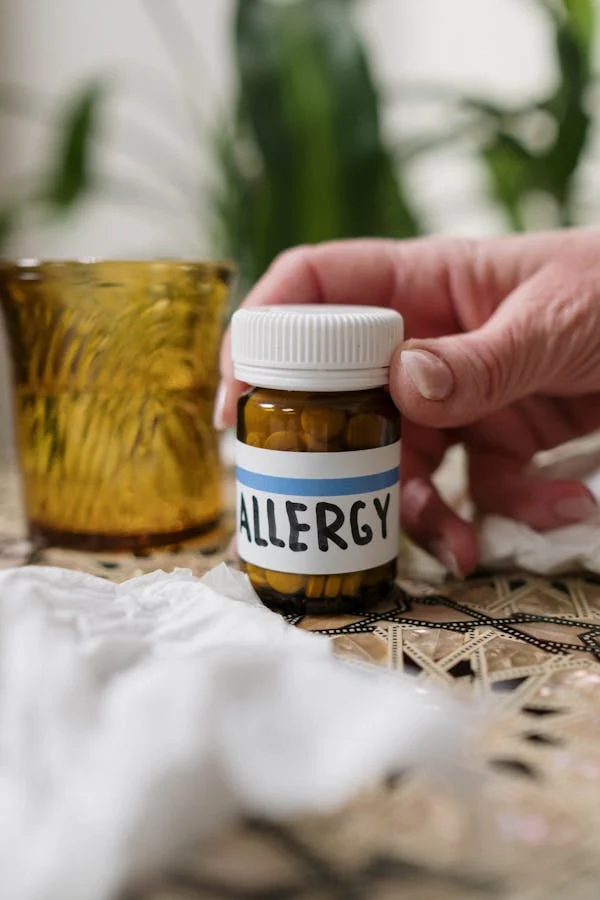Good To-Go: Safe Hiking Food for Allergies
Good To-Go Hiking Food Allergy Information.Hiking can be an enjoyable outdoor activity, When you think of food on a thru-hike you probably think of fast, sugary, nutritionless food. But being prepared is important, especially if you have food allergies. So what was my master plan for fueling my body while hiking? First, I looked at what kind of calorie and protein ingestion. I would need. This outline will provide essential information on choosing the right allergy-friendly food options for your next hiking trip.
Identifying Common Hiking Food Allergens
Common Food Allergens to Watch for on the Trail
Nuts and tree nuts

An allergy to tree nuts is one of the most frequent food allergies. Accompanying peanuts and shellfish, it is also one of the food allergens most commonly linked to allergy, a potentially dangerous reaction that disables breathing and can send the body into shock. The allergens responsible for nut allergy include seed storage proteins (violins, legumins, albumins), plant defense-related proteins, and profilins. Nut-allergic particulars often react to specific different nuts, recommending that cross-reactivity between nut allergens is a common circumstance.
What foods should you avoid when you have a tree nut allergy?
Usually avoid foods that have any of these ingredients:
- Almonds.
- Artificial nuts.
- Beechnut.
- Brazil nuts.
- Butternut (white walnut)
- Cashews.
- Chestnuts.
- Chinquapin nut.
- What snacks are safe for nut allergies?
- Chips.
- Pretzels.
- Fruit Snacks.
- Vegetable Snacks.
- Cheese Snacks.
- Rice, Grains & Seeds.
- Herb & Spices.
Soy

A soy allergy is a type of food allergy that occurs when your immune system incorrectly activates a protective response to soy. This reaction or allergic reaction can cause different symptoms, including vomiting, stomach cramps, indigestion, diarrhea, and, in serious cases, anaphylaxis. However, Soy is a high-quality protein. It is one of the little-known plant foods to contain all the important amino acids, like those found in meat. The soybean is: high in fiber. High in protein. If the person eats something made with soy, the body thinks these proteins are harmful invaders and responds by working very hard to fight off the invaders. This causes an allergic reaction.
Wheat/gluten
Wheat allergy takes place when your body creates antibodies to proteins found in wheat. In celiac disease, a particular protein in wheat gluten causes various abnormal immune system reactions.
Foods containing gluten (not safe to eat)
- bread.
- Pasta.
- Cereals.
- Biscuits or crackers.
- Cakes and pastries.
- Pies.
- Gravies and sauces.
- How to stop eating gluten?
- Choose gluten-free grains. …
- Look for a gluten-free certification label. …
- Eat more produce. …
- Clean out your pantry. …
- Avoid gluten-containing beverages. …
- Bring your food. …
- Eat more nuts and seeds. …
- Know the different names for wheat.
Symptoms
- Hives or skin rash.
- Nausea, stomach cramps, indigestion, vomiting or diarrhea.
- Stuffy or runny nose.
- Sneezing.
- Headaches.
- Asthma.
- Anaphylaxis (less common), is a potentially life-threatening reaction that can impair breathing and send the body into shock.
Dairy

People with a milk or dairy allergy experience symptoms because their immune system reacts as though milk and other dairy products are dangerous invaders. This reaction can cause hives, gaseous stomach vomiting, bloody stools, and even Anaphylaxis, a life-threatening allergic response. Moreover, You may see these different terms: cow’s milk allergy (CMA), cow’s milk protein allergy (CMPA), and dairy allergy. They all mean the same thing. To keep it easy, KFA uses the term “milk allergy.” A milk allergy is an immunoglobulin E-mediated allergic reaction to milk protein.
Dairy products include:
- Milk
- Butter
- Cheese
- Cream
- Yogurt
- Ice cream
The only way to restrain an allergic reaction is to avoid milk and milk proteins. This can be strenuous because milk is an ordinary ingredient in many foods. Also, some people with milk allergy can tolerate milk in some forms, such as milk that’s heated in baked goods, or some processed foods, such as yogurt.
Eggs

Egg allergy symptoms can include Skin inflammation or hives the most common egg allergy reaction. Rhinitis, runny nose, and sneezing Digestive symptoms, such as stiffness, nausea, and vomiting.
Egg allergy develops when the body’s immune system becomes sensitized and overreacts to proteins in egg whites and/or yolks. When eggs are eaten, the body sees the protein as a foreign interloper and sends out chemicals to protect against it.
Conflicting to popular belief, eggs do not make most of us flatus. But they do contain sulphur-packed methionine. So if you do not want smelly flatus, do not eat eggs alongside fart-causing foods such as beans or Tallow and suet. If eggs make you swollen and give you wind, you may be allergic to them or have an allergy.
Symptoms of an Allergic Reaction
Hives, itching, or rash
Symptoms include tingling or itching in the mouth. A raised, itchy red rash (urticarial) – in some cases, the skin can turn red and itchy, but without a raised rash. Swelling of the face, mouth throat, or other parts of the body.
Swelling of the face, lips, tongue, or throat
In oral allergy indisposition., your immune system makes your lips and mouth swell up because it mistakes
Specific foods for something hurtful in your body. Your stomach acid usually demolishes the proteins and the reaction does not extend any further. The swelling of your face, lips, tongue, and throat is Angioedema. Angioedema is often caused by an allergic reaction. Go to the emergency room if you have swelling in your face or throat.
If you are allergic to things you eat or drink, your body will react in response if it comes across them. Fish, nuts, and dairy are common triggers. This may arouse your face within minutes, mainly around your lips and eyes, as well as your tongue and the upper portion of the mouth.
Difficulty breathing
In some people, a food allergy can activate an acute allergic reaction called anaphylaxis. This can cause life-threatening symptoms, including Constriction and tightening of the airways. Therefore, The sensation of a lump and swollen throat in your throat makes it hard to breathe. Feeling dizzy or lightheaded. Prickly skin or an increased rash swelling of the lips, face, and eyes breathlessness, coughing, noisy breathing, wheezing, or a croaking voice. A person who has an allergic-type reaction can go into anaphylactic shock when their blood pressure drops seriously low. The air which is carried by Bronchial tissues, which help carry air, may start to swell and cause wheezing, shortness of breath, and even loss of awareness.
Nausea, vomiting, or diarrhea
Food allergies are the most likely allergies to cause sickness and vomiting. A reaction takes place when your immune system exaggerates a food or a substance in a food, mistakenly identifying it as a danger and activating a protective response. The most common FPIES food activators are cow’s milk, soy, rice, and oats, but any food can cause FPIES( Food protein-induced enterocolitis syndrome) symptoms. Typical symptoms of FPIES(Food protein-induced enterocolitis syndrome) include acute vomiting, diarrhea, and dehydration two hours after eating.
Packing Allergy-Friendly Hiking Snacks

Non-Perishable Allergy-Friendly Options
Non-perishable foods such as canned goods or dried fruit have a long shelf life and do not need to be refrigerated. There are many products on the market that have a long shelf life and are easy to store but still good for health.
Dried fruit
Dried and canned beans. With a long lifetime and high nutrient content, dried and canned beans are smart durable food choices. …
- Nut butters. Nut butter is creamy, nutrient-dense, and delicious. …
- Dried fruits and vegetables. …
- Canned fish and poultry. …
- Nuts and seeds. …
- Grains. …
- Canned vegetables and fruits. …
- Jerky.
Allergy-friendly energy gels or chews
While the soaking-up rates of chews and gels are very similar, a gel will give you the fastest to fix when you are a competitor or participate and training. The gel packaging is superb streamlined and small. A gel easily slides into any pocket, pack, or even sports bra.
Good To-Go: Safe Hiking Food for Allergies
Restricted variation of textures. Contingent on the amount of water, it can be watery or opaque. Such a high congregation of carbohydrates can upset some stomachs, mainly when they are not swallowed regularly, are swallowed without water, or at the wrong time.
During any run lasting over 2 hours, compatible fuel ingestion is vital for maintaining speed and avoiding smacking, and glycogen consumption resulting in unexpected fatigue. Most runners need 30-90 grams of carbohydrates per hour when running this long.
Gluten-free crackers
Stay away from all products that are getting from wheat, rye, barley, malt, or triticale in the ingredient label. Even if a packaged food outcome is labeled “gluten-free,” your Smoothies should check for these ingredients as an omission in labeling can happen.
Made with fruit and milk or yogurt. Hard-boiled eggs. Plain tortilla or potato chips, rice flour, almond flour, corn flour, or other gluten-free flour made with crackers
The Best Gluten-Free Crackers

- Blue diamond almond nut thing clue of sea salt.
- Breton gluten-free original with flat
- Crunchmaster multi-grain crackers sea salt.
- Crunchmaster grain-free crackers lightly salted.
- Glutino orignal table crackers.
- Marys one crackers orignal,
- Mary’s gone real thin crackers sea salt.
- Fruit and Veggies. While it might not be the first thing your kid grabs from the kitchen, fresh fruit and veggies are healthy and also allergen-free. …
- Salted Popcorn. Another allergy-free staple is salted popcorn. …
- Rice Cakes. …
- Granola Bars. …
- Potato Chips. …
- Dried Fruit. …
- Allergy-free Candy. …
- Jerky.
Preparing Allergy-Safe Meals
Dehydrated or freeze-dried meals
Good To-Go: Safe Hiking Food for Allergies. Freeze-dried food contains most of its nutrients all over the process, and once rehydrated, is very similar in nutritional value to its fresh counterpart. In variance to dehydrated food where only up to 60 to 75% of the original nutrients are maintained. In freeze-dried food, up to 97% of the nutrients are retained.
Freeze-dried foods maintain the huge majority of the vitamins and minerals found in their actual state. Freeze-dried food retains its nutrition because of the “cold, vacuum” process that is used to extract the water. Whereas, the nutritional value of dehydrated food is normally around 60% of identical fresh food.
Shelf-stable nut/seed butter
Based on the other supplement, the shelf-life and storage methods will differ. Nut butter with added sugars and other oils is more likely to have a more stable shelf-life. A sealed jar will generally last around two years but breaking the seal will reduce the shelf-life
How to Store. Nut butter will last for a long time if stored in an airtight jar. They will last at least a month at room temperature, or at least 3 months in the fridge. I suggest keeping mine at room temperature, as that is when the appearance is almost creamy.
Gluten-free pasta or rice dishes
- On the other hand, There are 6 Best Types of Gluten-Free Pasta and Noodles
- Brown Rice Pasta. …
- Shirataki Noodles. …
- Chickpea Pasta. …
- Quinoa Pasta. …
- Soba Noodles. …
- Multigrain Pasta.
Moreover, All natural forms of rice, including white, brown, or wild, are gluten-free. Furthermore, Natural rice is an eminent option for people who are sensitive to or allergic to gluten, a protein usually found in wheat, barley, and rye, and for people who have Enteropathy an autoimmune disease activated by gluten.
Good To-Go: Safe Hiking Food for Allergies
Staying Safe on the Trail
Bring Necessary Medications
What medicine to bring when traveling?
Medicines
- Antacid.
- Antibiotics, if prescribed by your healthcare professional, such as for travelers’ diarrhea.
- Antihistamine.
- Antimalarial medicines, if recommended by your healthcare professional.
- Antivirals, if prescribed by your healthcare professional, such as for influenza (flu)
- Good To-Go: Safe Hiking Food for Allergies
- Himalayan Medical Kit | A Must-Have
- For example, Crocin 650 or Dolo 650 Fever / High Fever
- Combliflam – ( Fever + Reduce Muscle Pain )
- Zintac/Aciloc/Rantac/ Omez ( Acidity)
- Allegra ( Allergy )
- Cough Syrup ( for cough )
- Disprin ( for headache, try not to use at elevation and height.
Epinephrine auto-injectors
Epinephrine auto-injectors treat severe allergic reactions (anaphylaxis) and asthma attacks. Anaphylaxis is a medical emergency, so after using epinephrine contact emergency services. This medicament is an injection that goes into a muscle or under your skin.
What is this medication? EPINEPHRINE treats acute allergic reactions (anaphylaxis) or unexpected asthma attacks. Low blood pressure and slow heart rate might be treated by it. It lessens the effects of an allergic reaction, such as difficulty in breathing or swelling of the face, lips, and throat.
Antihistamines
What are the best antihistamines for hiking?
Benadryl tablets are best to carry before heading outdoors to intercept symptoms; however, it may be better to try a latest-generation oral antihistamine such as Curist Allergy Relief if Benadryl makes you sleepy.
Our suggestion is to start with second-generation agents because they have a good balance between efficiency, tolerability, and price. Therefore, Second-generation antihistamines: The preferred first-step agent is cetirizine (Zyrtec); others include loratadine (Claritin), and fexofenadine (Allegra).
Inhalers
Salbutamol is used to relieve symptoms of asthma and chronic awkward pulmonary disease such as coughing, wheezing, and feeling breathless. Moreover, It works by relaxing and relieving the muscles of the airways into the lungs, which makes it facile or simple to breathe. Salbutamol comes in an inhaler.
Communicate with Hiking Companions
Inform them of your allergies
Let the host know as soon as possible of any allergies.
Good To-Go: Safe Hiking Food for Allergies
Let the host know about your allergy issues well ahead of time. Talk about how you have controlled things in the past. If they cannot harbor you due to time or cost, then at least you will know in time to work around it. The first step to guarantee that a customer’s food will be composed safely is asking if they have any allergies or illiberality when first greeting them. For people with significant allergies, this will set the quality for a comfortable dining experience.
- Provide all the details including what you are allergic to as well as the sensitivity to exposure.
- Offer to bring a side dish that meets your requirements and bring enough for the entire party.
Agree on emergency protocols.
Emergency response protocols are the plans and procedures that guide how an organization or a community responds to an emergency, such as a natural disaster, a terrorist attack, or a pandemic. Therefore, Effective emergency response protocols can save lives, reduce damages, and enhance resilience. Thus, These common elements allow you to get ready for and protect yourself and your animals from natural disasters. Emergency organizers think of disasters as reappearing events with four phases: Mitigation, readiness, Response, and Recovery. The following diagram illustrates the relationship of the four phases of emergency management.
Identifying Common Hiking Food Allergens
Nuts and Tree Nuts
- A common allergen that can trigger severe reactions.
- Avoid: Almonds, cashews, Brazil nuts, artificial nuts, etc.
- Safe snacks: Chips, pretzels, fruit snacks, cheese, rice, grains, and seeds.
Soy
- Found in many protein sources but can cause reactions like vomiting, cramps, and, rarely, anaphylaxis.
- Safe choices: Soy-free, high-fiber snacks, other plant proteins, and whole foods without soy derivatives.
Wheat/Gluten
- Wheat allergy or celiac disease necessitates gluten avoidance.
- Avoid: Bread, pasta, cereals, cakes, sauces containing gluten.
- Safe options: Gluten-free grains, gluten-free certified foods, fresh fruits, and vegetables.
Dairy
- Reactions can range from mild to severe, including hives and gastrointestinal distress.
- Avoid: Milk, cheese, yogurt, ice cream, and butter.
- Safe choices: Dairy-free alternatives, plant-based snacks.
Eggs
- An egg allergy can cause skin inflammation, nasal congestion, or digestive issues.
- Avoid: Egg-based products and dishes.
- Safe snacks: Egg-free snacks, fruit, and vegetable-based foods.
Symptoms of an Allergic Reaction
- Mild: Hives, rash, itching.
- Moderate: Swelling (face, lips, throat), tingling in the mouth.
- Severe: Difficulty breathing, dizziness, nausea, or anaphylaxis (requires immediate medical attention).
Packing Allergy-Friendly Hiking Snacks
Non-Perishable Allergy-Friendly Options
- Dried fruits and vegetables, canned beans, nut-free energy bars.
- Nut/seed butter in shelf-stable packaging (for those not allergic).
- Gluten-free crackers, rice cakes, and allergy-safe jerky.
Energy Gels or Chews
Preparing Allergy-Safe Meals
- Dehydrated or Freeze-Dried Meals: Retain nutrients and are lightweight.
- Shelf-Stable Nut/Seed Butter: Great energy source if not allergic.
- Gluten-Free Pasta or Rice Dishes: Alternative carbohydrate sources for those with gluten sensitivity.
Staying Safe on the Trail
Bring Necessary Medications
- Medications: Antacids, antihistamines, epinephrine, and inhalers.
- Antihistamines: Second-generation options (e.g., Zyrtec, Allegra) can reduce drowsiness.
Communicate with Hiking Companions
- Inform about Allergies: Make companions aware of allergies and emergency protocols.
- Agree on Protocols: Set up an emergency plan for quick action if needed.
FAQs
Q: What are the common allergens found in hiking foods?
A: Nuts, soy, wheat/gluten, dairy, and eggs.
Q: What should I avoid if I have a nut allergy?
A: Avoid all nuts and products containing nuts.
Q: Can I eat soy products if I have a soy allergy?
A: No, you should avoid all soy and soy derivatives.
Q: What are safe alternatives to gluten-containing foods?
A: Gluten-free grains, fruits, and vegetables.
Q: How can I identify a severe allergic reaction?
A: Symptoms include difficulty breathing, dizziness, and anaphylaxis.
Difference Table
| Allergen | Avoided Foods | Safe Snacks/Options |
| Nuts | Almonds, cashews, Brazil nuts | Chips, pretzels, fruit snacks |
| Soy | Soy products | Soy-free snacks, plant proteins |
| Wheat/Gluten | Bread, pasta, cereals | Gluten-free grains, fresh fruits |
| Dairy | Milk, cheese, yogurt | Dairy-free alternatives |
| Eggs | Egg-based products | Egg-free snacks, fruits, vegetables |
Conclusion
Good To-Go: Safe Hiking Food for Allergies. Hiking with food allergies requires extra planning and preparation, but it’s very doable. In addition, By packing the right allergy-friendly snacks and medications, and communicating with your hiking group, you can safely enjoy the great outdoors. Remember, being proactive is key to a successful and safe hiking experience. As a result, Don’t let food allergies hold you back from your hiking adventures. Use this guide to plan your next allergy-friendly outing and confidently get out on the trails.
What are allergy friendly foods?
Allergy-friendly foods are free from common allergens like dairy, nuts, gluten, soy, and eggs, often including fruits, vegetables, rice, and lean proteins.
What not to eat before hiking?
Avoid heavy, greasy foods, high-fiber meals, and excessive sugar before hiking, as they can cause digestive discomfort or energy crashes.


1 thought on “Good To-Go: Safe Hiking Food for Allergies”